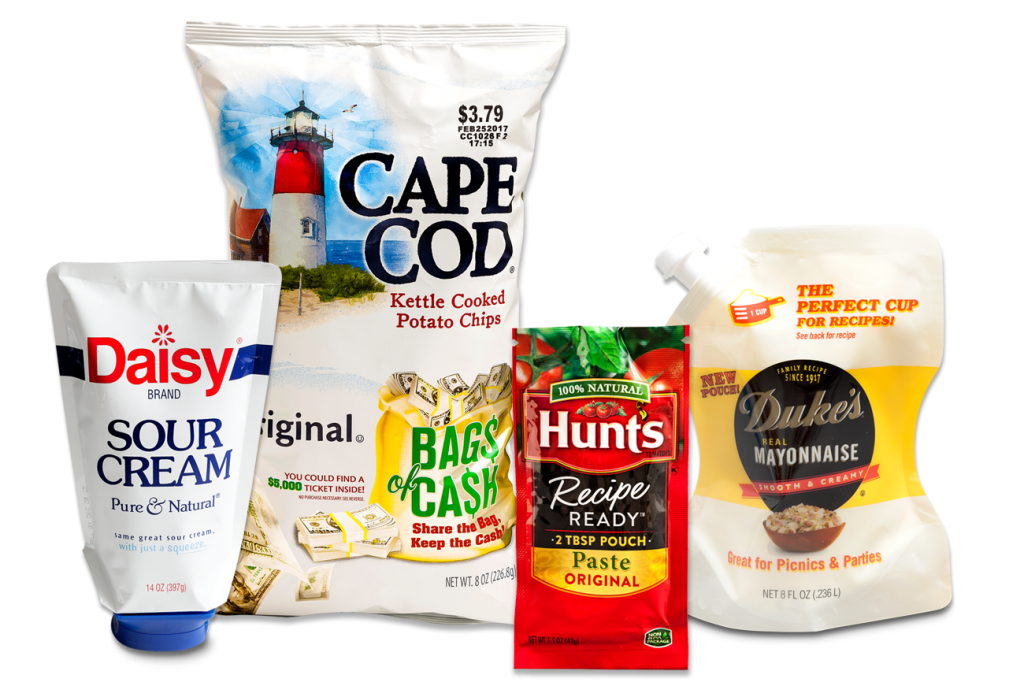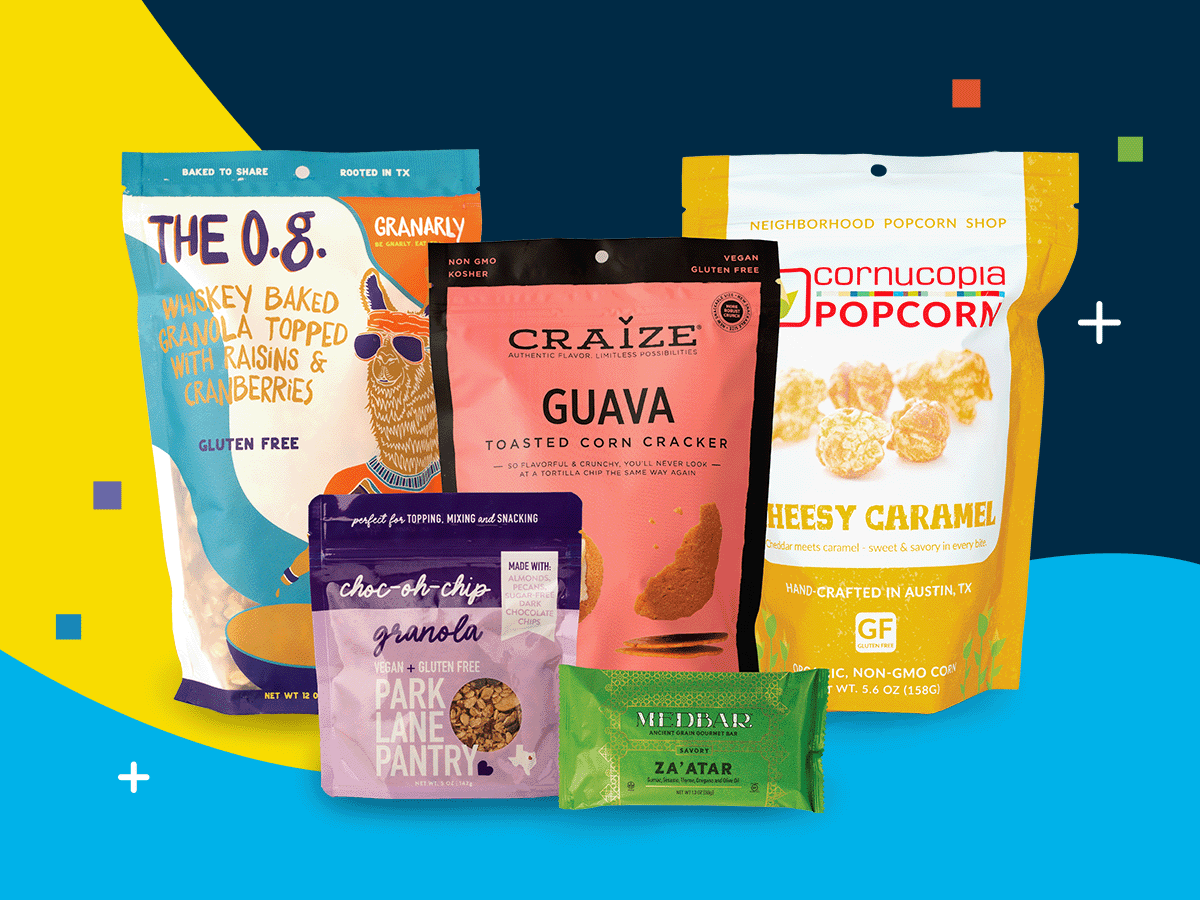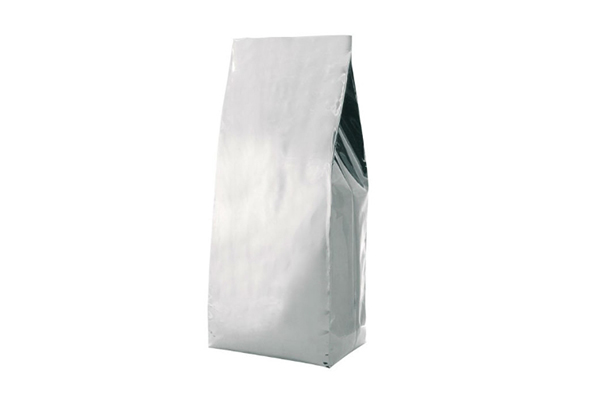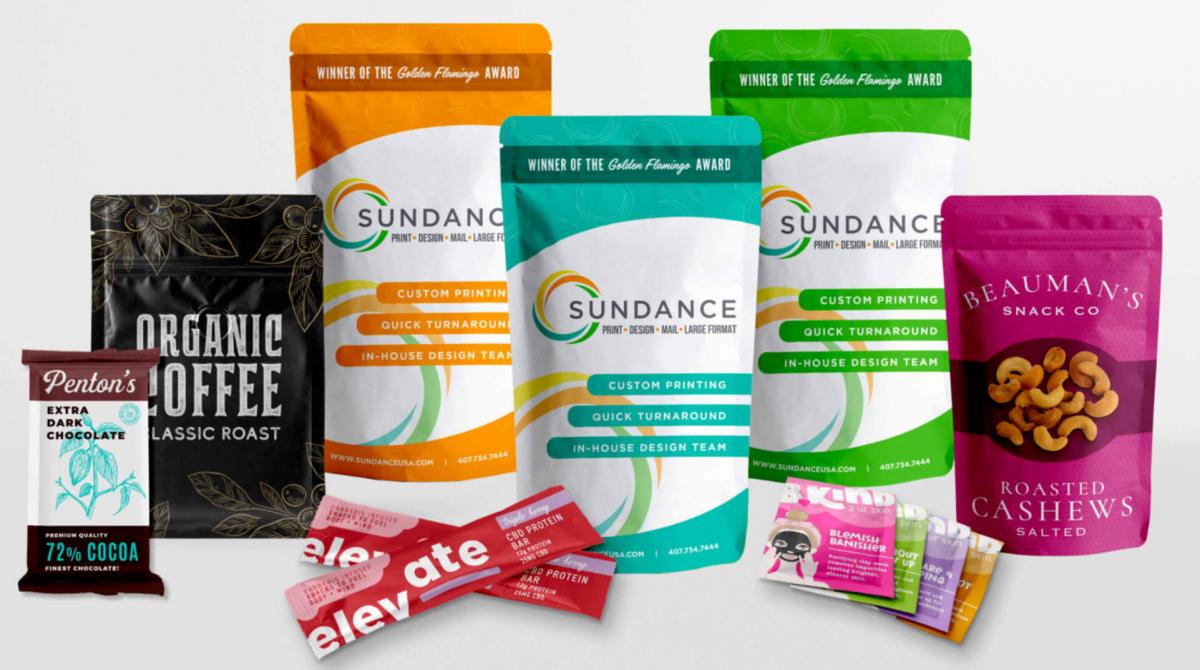Hello, I’m Allen, and from my factory floor here in China, I’ve seen firsthand how the right packaging can transform a product’s success. For business owners like Mark Thompson in the USA, who are focused on quality, innovation, and brand appeal, the choice of packaging is a critical strategic decision. One of the most fundamental choices you’ll face is between a gusseted bag and a flat bag. While it might seem like a small detail, this choice impacts everything from your product’s volume and shelf presence to your shipping costs and storage efficiency. This article will break down the key differences, helping you understand which packaging solution will best serve your product and your brand.
What Exactly is a Gusset in a Packaging Bag?
Let’s start with the basics. What is a gusset? In the world of flexible packaging, a gusset is an extra piece of material or a fold built into the sides or bottom of a bag. Its purpose is simple but powerful: to allow the package to expand and accommodate more product. Think of it like a pleat in a pair of trousers or an accordion’s bellows; this added dimension gives the bag a three-dimensional structure, transforming it from a simple flat envelope into a more spacious container. This feature is what gives a gusseted bag its unique ability to hold more volume than a flat bag of the same height and width.
This simple fold is what separates a basic pouch from a more advanced packaging solution. There are two primary types of gussets that we manufacture. The first is the side gusset, where the folds are located on the left and right sides of the bag. The second is the bottom gusset, which, as the name implies, is located at the base of the package. Each type of gusset offers distinct advantages in terms of how the product is displayed, stored, and filled, making the choice between them a crucial one for any product.

How Do Side Gusset Bags Differ from Flat Bags?
The most common comparison I encounter is between a side gusset bag and a standard flat bag. A flat bag, often called a pillow pouch or a three-side seal pouch, is the simplest form of flexible packaging. It’s essentially two pieces of film sealed on three sides, creating a two-dimensional pocket. In contrast, a bag with a side gusset has inward-folding pleats on its sides, which expand to create a boxier, more structured shape when filled.
This structural difference leads to several key distinctions. Side gusseted bags take up significantly more volume, making them ideal for bulkier items like coffee beans, granola, pet food, and powders. The gusset allows the package to form-fit around the product. A flat bag, on the other hand, is better suited for lightweight products or single-serving items, such as jerky, sample-sized cosmetics, or spice packets. While both are excellent options, the presence of a side gusset fundamentally changes the capacity and presentation of the final package.
Here’s a quick comparison:
| Feature | Side Gusset Bag | Flat Bag (Pillow Pouch) |
|---|---|---|
| Structure | Three-dimensional, expands on the sides | Two-dimensional, flat |
| Volume | High capacity for bulkier items | Limited capacity, best for small items |
| Best For | Coffee, tea, powders, pet food, snacks | Single-servings, samples, flat items |
| Shelf Display | Lays flat or can be stood on its end (fin seal) | Lays flat or hangs from a peg |
| Storage | Folds flat, very efficient storage before filling | Extremely efficient, takes up minimal space |
What are the Advantages of a Bottom Gusset Bag?
While a side gusset adds capacity, a bottom gusset adds a different, highly valuable feature: the ability to stand upright. This is why bags with a bottom gusset are commonly known as stand-up pouches. This single feature is a game-changer for retail environments. A package that can stand on its own becomes its own billboard on the shelf, commanding customer attention without needing any external support. For brands looking to maximize their visual impact, a gusseted bag with a stable bottom gusset is an unbeatable packaging solution.
The bottom gusset opens up and flattens out to create a sturdy base, allowing the pouch to be displayed vertically. This not only improves visibility but also communicates a sense of quality and modernity. Think about the crowded aisles of a supermarket; products that stand out are the ones that get noticed. From liquid detergents and juices to snacks and frozen foods, bottom gusseted bags provide a premium look and feel that can elevate a product’s perceived value. This functionality makes the bottom gusset one of the most popular features in modern flexible packaging.
"When we switched from a flat pouch to a stand-up pouch with a bottom gusset for our new line of organic snacks, our retail placement improved almost overnight. Store managers loved that it was a self-contained display." – A quote inspired by a client like Mark Thompson.
When Should You Choose a Flat Bag Over a Gusseted Bag?
Despite the many benefits of a gusset, there are still many situations where a simple flat bag is the superior choice. As a packaging manufacturer, I always advise my clients to match the package to the product’s specific needs. Flat bags are a great option when efficiency, simplicity, and cost-effectiveness for small items are the top priorities. Their minimalist design makes them perfect for products that don’t require a lot of volume.
Consider these scenarios where a flat bag excels:
- Single-Serve Products: Items like tea bags, instant coffee sachets, or single-use face masks are perfectly suited for a flat pouch. The small quantity doesn’t justify the extra material of a gusset.
- Sample Packs: If you’re distributing samples of a lotion, powder, or liquid, a small, sealed flat pouch is the most economical and practical solution. Check out our options for sample cosmetic packaging flexible pouch bags for ideas.
- Products for Peg Displays: Flat bags are often designed with a hang hole, making them ideal for hanging on retail pegboards. This is common for products like phone accessories, craft supplies, and candy.
- Vacuum Sealing: For products like cheese, cured meats, or fish, a flat bag is perfect for vacuum sealing, as it creates a tight, form-fit seal that removes air and extends shelf life.

How Does a Gusset Impact the Volume and Storage of a Package?
The impact of a gusset on volume is its primary functional advantage. By adding folds to the sides or bottom, a gusseted bag can hold significantly more product than a flat bag of the same outer dimensions. For example, a flat bag that is 6 inches wide and 8 inches tall has a very limited filling capacity. However, adding a 3-inch side or bottom gusset to that same bag could easily double or triple its internal volume, allowing you to package much more product without increasing the front-facing "billboard" space.
This increased capacity also leads to surprising benefits in storage efficiency. While a filled gusseted bag takes up more space, the opposite is true before filling. Bags with gussets are delivered flat, meaning they take up less space in your warehouse than rigid containers like cans, jars, or boxes. You can store thousands of flat-packed gusseted bags in the same space that would hold only a few hundred empty bottles. This improved product-to-package ratio reduces warehousing costs and streamlines your entire packing process.
Which Gusset Type Offers a Better Packaging Solution for Retail?
When deciding between a side gusset and a bottom gusset for retail, the choice often comes down to your product and desired brand aesthetic. Both offer unique advantages for retail display, and the "better" option is entirely subjective. A bottom gusset, or stand-up pouch, is often perceived as more modern and is incredibly versatile. It offers a clean, prominent display and is suitable for a wide range of products, from liquids with nozzles to solid snacks with resealable zippers.
On the other hand, the side gusset bag has a classic, traditional appeal. It’s the go-to format for premium coffee and tea, where the "brick" shape it forms when filled is iconic. The long, flat front and back panels provide a large canvas for branding and product information. Side gusset bags can also be designed with a "fin seal" on the back or a "lap seal" where one panel overlaps the other, which can influence the final look. Ultimately, the aesthetics of both gusset types can be leveraged to create a powerful on-shelf presentation.
Can Gusseted Bags Improve Your Shipping and Storage Efficiency?
Absolutely. This is a point I always emphasize with my clients who are concerned about logistics costs. The transition from rigid to flexible packaging, particularly to a gusseted bag, brings significant improvements in shipping and storage efficiency. Because these bags are lightweight, they reduce the overall weight of your shipment, which can lead to substantial savings in freight costs, especially for large orders. This is a major reason why companies in the USA and Europe seek out suppliers like us in China for cost-effective solutions.
Furthermore, the flexibility of a gusseted bag allows for more efficient packing. Unlike rigid boxes that leave empty space in a shipping carton, flexible bags can conform to fill a container more completely. This means you can fit more units into a single box, reducing the number of cartons you ship. When you combine lower weight with better space utilization, the cost savings become undeniable. The durability of modern multi-layer films also ensures that the product is protected by a strong seal during transit, minimizing the risk of damage. For any business looking to optimize its supply chain, gusseted bags are a great choice.

What Are the Different Gusset Types for the Bottom of a Bag?
When we talk about a bottom gusset, it’s not a one-size-fits-all design. As an expert manufacturer, we offer several different gusset types to ensure the pouch performs perfectly for your specific product. The construction of the bottom of a bag is critical for stability and presentation. Understanding these variations can help you choose the ideal gusseted pouch bags for your needs.
Here are the three most common types of bottom gusseted pouches:
- Plow Bottom Gusset: This is a classic design where the gusset is made from a single piece of film that is folded up and sealed to the front and back panels. It’s called a "plow" bottom because when you look at it from the side, it resembles the front of a plow. This design is extremely strong and is excellent for heavier, granular products like sugar, flour, and pet food, as the product weight sits directly on the shelf. This style is also referred to as a "W-fold" gusset.
- K-Seal Bottom Gusset: With a K-seal, the seals at the bottom gusset are angled in from the sides, creating a "K" shape. This clever design takes stress off the seals at the very bottom of the package, which is especially useful for liquids and lighter-weight products. The K-seal helps the gusseted bag to stand more stably, even when it’s not completely full.
- Round Bottom Gusset: Also known as a "Doyen" seal, this style involves sealing a separate piece of U-shaped material to the front and back panels. This creates a seamless and elegant base, making it a popular choice for high-end liquid products or when a premium aesthetic is desired. It offers excellent stability and is one of the most reliable gusset types. This is a very popular choice for all natural and eco-friendly packaging pouch bags.
How Do Material Choices Affect the Performance of a Gusset Bag?
The performance of any gusset bag—whether it’s a side gusset or bottom gusset style—is heavily dependent on the materials used to construct it. A beautiful design is useless if the package fails to protect the product. For my clients, a key concern is ensuring the material provides the right barrier properties, durability, and print quality. This is where our expertise in lamination and material science comes into play. We combine different layers of film to create a structure with unique features tailored to the product.
For example, a coffee bag needs a high barrier against oxygen and moisture to keep the beans fresh. For this, we might use a lamination of PET (for print quality and strength), VMPET (a metalized layer for an excellent oxygen barrier), and LLDPE (for sealing). For a cosmetic packaging pouch, the focus might be more on chemical resistance and a premium feel, perhaps using a matte finish. For clients interested in sustainability, we offer recyclable mono-material structures or even compostable films. The right material ensures the gusset holds its shape, the seal remains intact, and the product inside stays safe and effective from our factory to the end consumer.

Choosing the Right Gusseted Bag: A Strategic Decision for Your Brand
Ultimately, the choice between gusseted bags vs. flat bags, or between a side gusset and a bottom gusset, is more than a technical decision—it’s a strategic one. The package is the first physical interaction a customer has with your brand. It needs to communicate your values, protect your product, and function flawlessly. As a factory owner, I see my role as a partner in this process, guiding clients like Mark to the solution that best fits their goals.
Before making a final decision, consider these questions:
- What is my product? Is it a liquid, solid, or powder? Is it heavy or light? The product itself will often dictate the best packaging bag.
- Where will it be sold? If it’s on a crowded retail shelf, a stand-up pouch with a bottom gusset might be essential. If it’s sold online, shipping efficiency might be the priority.
- What is my brand identity? Are you a traditional, classic brand or a modern, innovative one? The aesthetic of a side gusset vs. a bottom gusset can help reinforce this image.
- What is my budget? While gusseted bags offer more features, a simple flat pouch can be a highly cost-effective solution for certain applications.
Thinking through these points will help you narrow down your options and select the perfect gusseted bag or flat pouch to help your product succeed.
Key Takeaways to Remember
- A gusset is a fold in a bag that adds volume and allows it to expand.
- Side Gusset Bags are great for high-volume, bulkier items like coffee and powders, offering a classic look.
- Bottom Gusset Bags (Stand-Up Pouches) are perfect for retail, as they can stand upright on a shelf and offer excellent brand visibility.
- Flat Bags are the best option for single-serve, sample-size, or lightweight, flat items where simplicity and cost are key.
- Gusseted bags improve shipping and storage efficiency by being lightweight and storing flat before use.
- The type of bottom gusset (Plow, K-Seal, Round) affects the bag’s stability and is chosen based on the product’s weight and consistency.
- Material choice is critical for ensuring product protection, durability, and achieving the right brand aesthetic.
Post time: 07-08-2025

